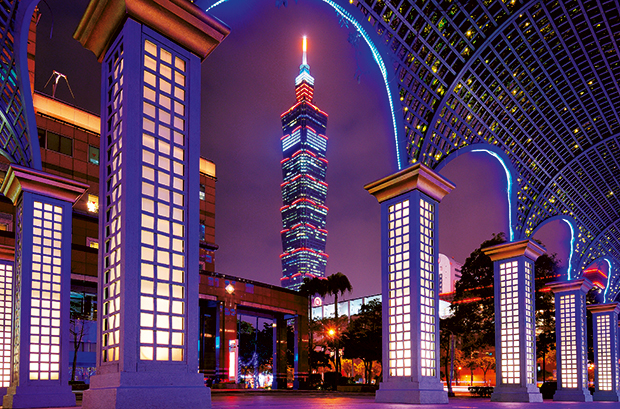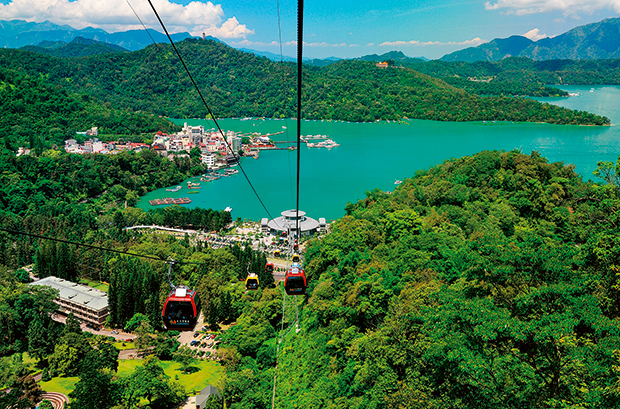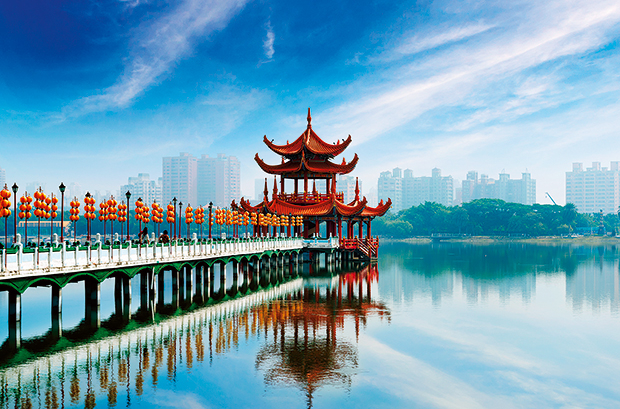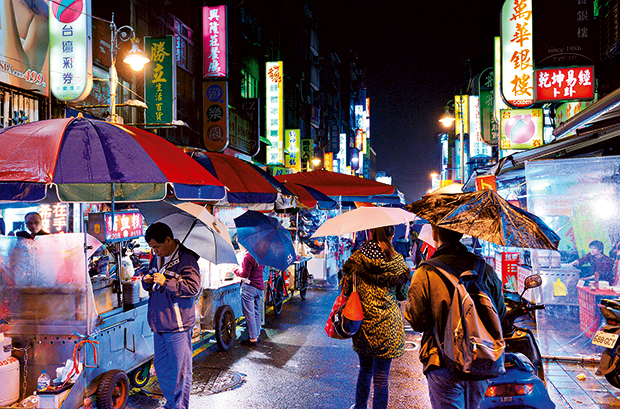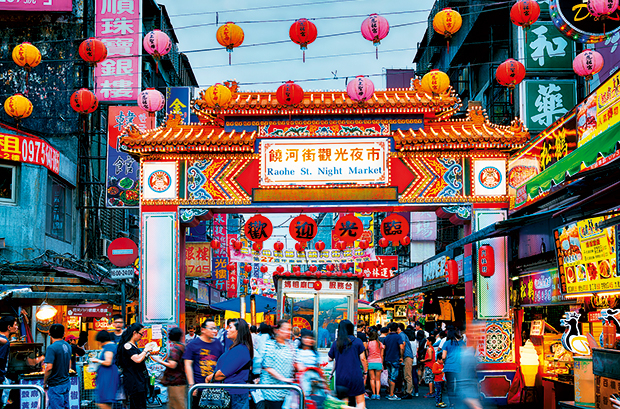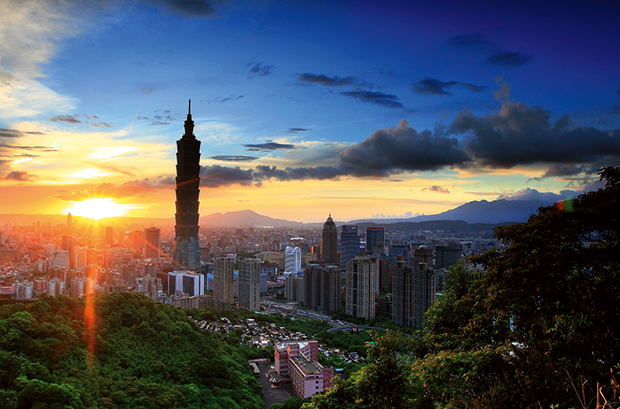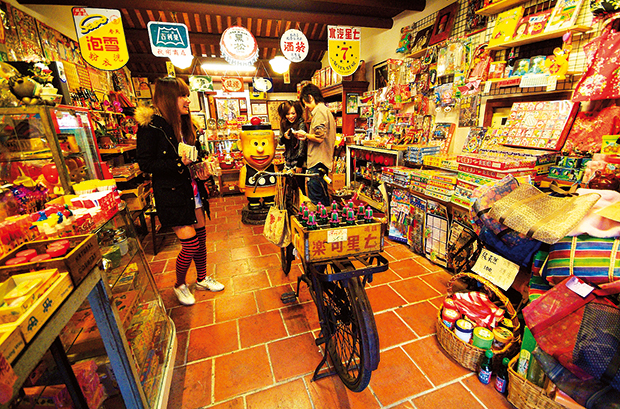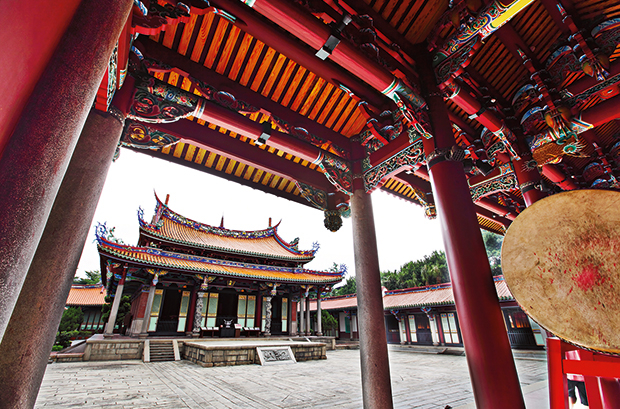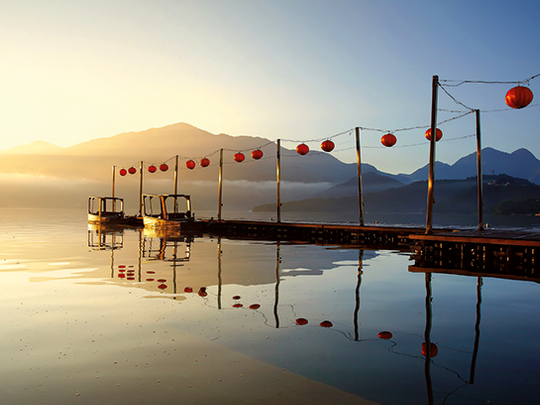
There is a school of thought that says no one should be afraid of heights. True – but it’s the ground if you fall that’s the scary thing. This is sort of how I feel as I sit in a swinging, creaking cable car slowly moving between two Taiwan mountain peaks almost a kilometre apart.
Above us, nothing but a slither of stretched metal connects our largely glass cabin to a thin cord of suspended cable. Below is close to 200 metres of fresh air.
“It’s OK,” laughs a friend. “Just try not to think about how we’re in one of the world’s most active earthquake zones.” She pauses, then presses on. “Makes you wonder, though, hey? What would happen to us up here if there was a real Richter-scale shaker down there…”
I look at her. And then, for the next 18 minutes, as we complete this aerial journey across and above Mount Buji, in Nantou County, central Taiwan, we sit in silence. The only chatter comes from the wind buffeting the car and the occasional groan of metal on metal.
And yet, these 18 minutes – now that I have my feet back on (relatively) firm ground – rank among the most incredible of my life.
We are at Sun Moon Lake, a stunning 18,000-hectare national park, some 320 kilometres south of capital Taipei. So called because its shape resembles a moon next to a sun (some squinting required), this vast body of clear blue water sits nestled between a pearl of mountains covered by alpine forests and dotted with picturesque villages.
Eight million tourists visit every year, and from up in those cable cars it’s easy to see why. The ground far below may seem scary, but the views are simply mesmerising.
By the time we swing down to land, I’ve forgotten my concerns and would genuinely like to do the whole thing again. I don’t have time, though, as straight away we have a boat tour of the lake, which offers an entirely different – yet similarly special – perspective of this glorious splendour. Bike rides, hiking trails, a nostalgia railway and traditional aboriginal villages can all also be enjoyed. There’s even a small theme park in the area. All of which means that by the time I crash down that evening in the Japanese-inspired Hotel Del Lago, in the lakeside township of Yuchi, one thing has become clear: anyone who believes the well-worn stereotype that Taiwan is just some place in the East where they make cheap toys and expensive computers could not be more mistaken.
There is an element of truth in that assumption, of course. Taiwan is an incredibly complex country – to the extent that even its status as a country remains ambiguous. China, the giant neighbour across the strait, considers the island a renegade province – part of its own territory. As such, few nations anywhere in the world officially acknowledge Taiwan as a fully independent state.
Yet, internally, the place is run as an entirely sovereign country.
A democratically elected government pursues capitalist economic policies and a socially liberal agenda without answering to communist Beijing. Rather it views China as a potentially aggressive neighbour. Missiles and war planes are even bought from the US to deter the mainland from attempting forced reunification.
It was against this politically confused backdrop that the island grew into the perceived ‘workshop of the world’.
One of Asia’s four so-called Tiger Economies (along with Seoul in South Korea, Hong Kong and Singapore), it experienced incredible growth and financial success between the mid-Sixties and early-Nineties. This was down to the development of industries that focused on highly specialised technology and computer manufacturing just as this sector was exploding. Companies such as Taiwan Semiconductor Manufacturing and HTC became global giants. Other manufacturing sectors – including textiles, plastics, toys and bikes – experienced similar growth on the back of the success.
The result has been undoubtedly positive: today, despite being no bigger than Switzerland and having a population of just 23 million people, Taiwan has the 19th-largest economy in the world. Cities here are vibrant. People live well.
Yet there has also been a reverse reputational impact. To the outside world Taiwan can be seen as an island workshop, an entirely industrialised and factory-covered chunk of land with little to recommend it.
From the moment we touch down it’s clear this image is undeserved. Taiwan is utterly beautiful.
We’ll come again to the mountains and the lakes, the forests and the valleys shortly. But even in Taipei, the megalopolis capital of some seven million people that is the first stop on our seven-day tour, there is plenty to be wowed by.
This city – located in a basin encircled by the Yangming and Central Mountains – is extraordinary. Here towering 21st century skyscrapers sit cheek-by-jowl with historic Buddhist temples and 1930s Japanese halls and markets (the Japanese ruled the island between 1895 and 1945). There are bubble-tea shops on seemingly every corner, while the city’s famous hot springs – naturally occurring hot clean water that comes up fresh from the ground – have been turned into outdoor spa and bathing resorts. In the evening, neon night markets sell clothes, handcrafts, trinkets and all manner of local food delicacies.
Even the highways are impressive. Often raised several stories into the air they offer 360-degree views that are so panoramic you almost wish for a traffic jam so you can take them in a little more.
No view of the capital, however, can rival that from the 91st floor of the 509-metre high Taipei 101 building. Designed to evoke a bamboo shoot, this was the tallest building in the world between 2004 and 2010 (when the Burj Khalifa opened) and a trip to the top is a must. From up here, all Taipei stretches out below you. Recommended.
As is a trip to one of those hot-spring spas. There’s plenty to choose from and we whiled away an hour or so soaking in a selection of outdoor baths overlooking the city, feeling pores opening up and cares drifting away. Not even the slight smell of sulphur detracts from the atmosphere. Although a quick soap and shampoo in cooling showers afterwards may be recommended if you’re heading straight to dinner.
Ah, dinner. What’s the point of recommending restaurants in a city of such a size? There are delicious eateries catering for all tastes on every corner. One should clearly try the street food of the night markets – delicious little bites of stuff such as salt-cured duck, steamed chicken or beef noodles – but for a real Taiwan feast our central hotel, the Palais de Chine, served a buffet certainly worth sampling. Here Taiwan specials such as oyster omelettes, chicken feet, eel noodles and aburaage tofu were joined by more Western fare. We ate dinner there on our last of two nights in the city, and it was a delicious way to round things off.
From Taipei, we travelled south.Taiwan is, roughly speaking, divided between east and west with the Central Mountain Range running more or less down the middle.Generally, the west is more urbanised and the east more scenic. Yet despite the fact our trip stayed west-side, there was astonishing rural splendour aplenty.
Sun Moon Lake I’ve already mentioned but it’s worth repeating: its sheer beauty defies superlatives. The mountains here are among the most incredible things I’ve ever seen – and I’ve seen the Grand Canyon, the north face of the Eiger and Kylie Minogue in concert.
Although – did I mention it? – those cable cars don’t half feel high.
There’s also the aptly named Purple-Spotted Butterfly Valley in the southern district of Maolin. Here, in one of Taiwan’s most remote rural areas (the Japanese called it, rather impolitely, Savage Land), millions of migrated Euploea butterflies – purple in colour as you may already have guessed – arrive every winter to dance and forage until spring, when they head north.
Stand still long enough at one of numerous specially built trails or observation areas and one or two may even land on you.
Not far from this is the Taiwan Aboriginal Culture Park. Located in Pingtung County, these 82 hectares of rugged terrain celebrate nine of Taiwan’s 16 Aboriginal tribes (which today make up about 2 per cent of the population) by exhibiting historic artefacts, offering tours of traditional housing and putting on dance and music shows in specially built concert halls.
And if the surrounding landscape is jaw-dropping, just look at the legs of those male dancers. Spending several hours on stage every day is clearly a workout. Their thighs look like oak trees. Safe to say, you wouldn’t want to be in goal if they were taking penalties.
Yet if rural Taiwan is impressive, so too are its urban areas.
There’s nowhere else on the scale of Taipei but, on our tour, we also spend nights in the country’s oldest city, Tainan, and the southern harbour port of Kaohsiung.
The former, nicknamed, the Phoenix City, is arguably this nation’s historic soul. Originally founded by Dutch imperialists in the early 17th century, it was the capital until 1887 and today retains more Buddhist and Taoist temples than any other city in Taiwan. Especially worth a look are the Confucius temple from 1665 and the Anping Fort, which was built by those Dutch settlers in 1625.
Tainan is also home to Hayashi, thought to be the country’s oldest department store. It dates back to 1932 and is Japanese in style. Particularly of note are not just the sweet locally designed T-shirts but the bomb markings from the Second World War. Which – no matter how impressive it is – you just don’t get at The Dubai Mall. Kaohsiung, meanwhile, is a relaxed and friendly city whose sheer joie de vivre is perhaps best summed up by the name of its main waterway: Love River.
More than just a blue artery, this is where the population comes to relax and play with green spaces and restaurants lining the banks. We spend 30 minutes on an organised river cruise, learning about the city, as revealed by the buildings, monuments and parks along the sides. Particularly amusing is the story of the city mayor who claimed he had done such a good job cleaning the once polluted river that if he was re-elected he would swim from one side to the other. He won the vote and duly took the plunge. Rumours have persisted since that he had to be taken to hospital afterwards.
Another must for visitors is the Fo Guang Shan Buddhist monastery, home to the world’s largest statue of Buddha. At 35 metres high, it may not quite be on the scale of Taipei 101, but when seen up close – and especially at night when it’s lit golden – it’s seriously impressive.
Impressive too is the place where we stay in Kaohsiung. The Hotel Dua is a deep-carpeted, polished-surface piece of luxury close to several thriving night markets. And it feels like a fitting place to stay on our last night.
After a sleep there we’re ready and refreshed – despite enjoying the city’s 24-hour nightlife – to catch Taiwan’s famous bullet train back north to Taoyuan International Airport. As this delightful island – urban and rural – whizzes by in 90 minutes, it feels strange to think anyone could assume this place was nothing but factories and commerce.
Indeed, it is as far from that stereotype as those Sun Moon Lake cable cars were from the ground. And trust me, when you’re sitting in one, that feels pretty far.
This story first appeared on Friday in December 2014


